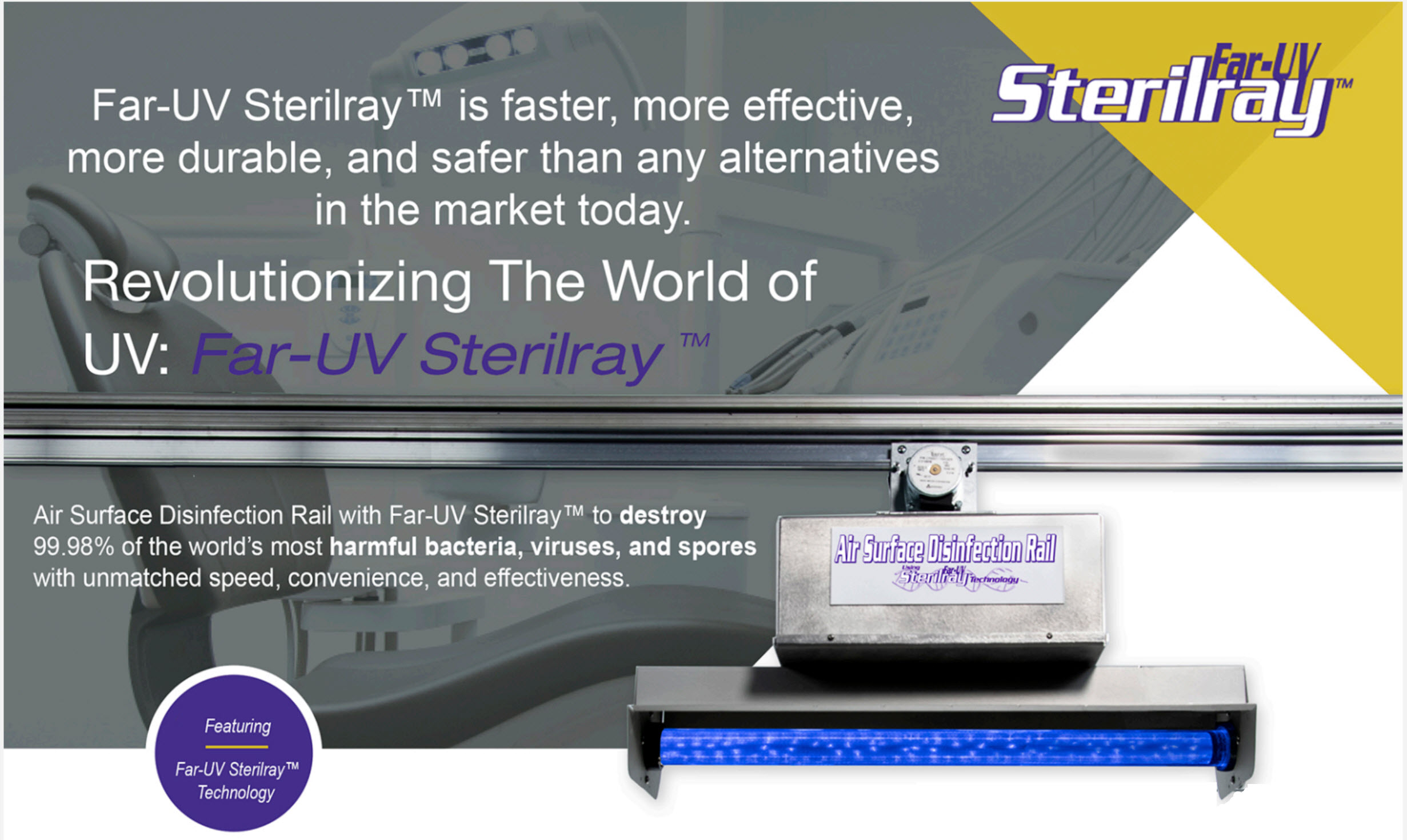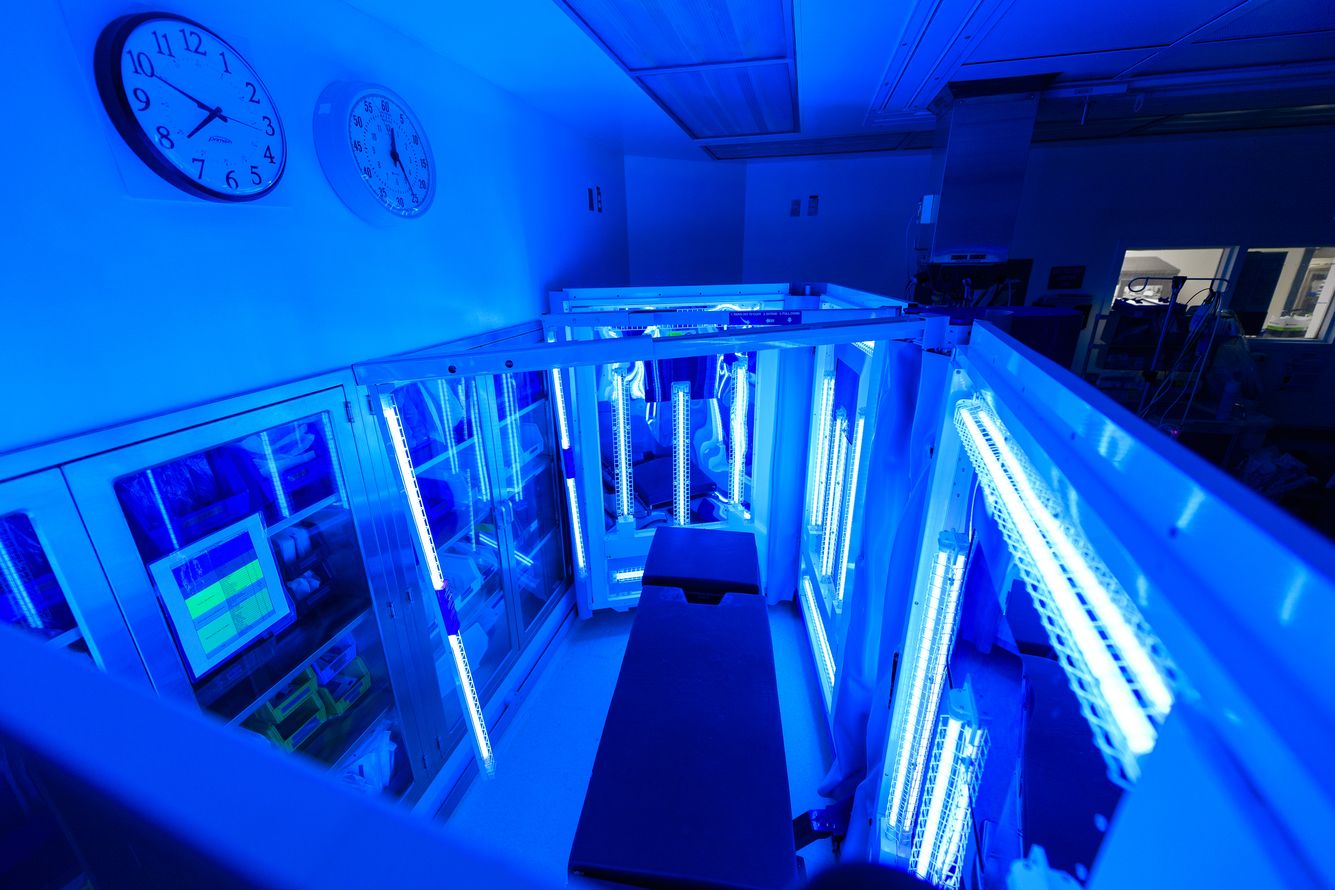UV Surface Disinfection Demystified: Recognizing the Scientific Research Behind the Remedy
UV Surface Disinfection Demystified: Recognizing the Scientific Research Behind the Remedy
Blog Article
UV Sanitation: The Cutting-Edge Innovation Transforming Sanitation Practices
In the world of sanitation methods, one technology has arised as a game-changer: UV sanitation. With its capability to remove damaging virus, this sophisticated innovation is revolutionizing the means we come close to sanitation and health. Yet just how does UV disinfection job, and what are the benefits it uses? From medical care settings to food processing, UV sanitation is making its mark in different markets. In this discussion, we will check out the ins and outs of this transformative technology and look in advance to its encouraging future.
Just How UV Disinfection Functions
UV disinfection works by making use of ultraviolet light to damage or suspend microorganisms, offering a chemical-free and extremely effective technique of cleanliness. This innovation harnesses the power of short-wavelength UV-C light, which can damaging the DNA and RNA of microorganisms, hence providing them unable to create and replicate harm.
The procedure starts with the installment of UV sanitation systems, which include UV lights that discharge UV-C light. These lamps are strategically placed in areas where microbial contamination is a problem, such as water treatment plants, health centers, laboratories, and food handling facilities.
When microorganisms are revealed to UV-C light, the photons permeate their cell walls and reach the DNA and RNA inside. The high-energy UV-C photons interrupt the hereditary material by producing bonds in between nearby nucleotides, resulting in the development of thymine dimers. These dimers avoid the microbes from replicating, making them safe.
UV sanitation is highly efficient against a wide variety of microbes, including microorganisms, parasites, and infections. It is specifically reliable versus waterborne pathogens like E. coli, Giardia, and Cryptosporidium. UV sanitation is a chemical-free approach, removing the need for possibly unsafe anti-bacterials and minimizing the threat of hazardous sanitation by-products.
Benefits of UV Sanitation
UV disinfection supplies countless benefits in the area of cleanliness, making it a highly favored technique for successfully getting rid of dangerous bacteria. Unlike conventional disinfection techniques that count on chemicals, UV disinfection uses ultraviolet light to ruin the DNA of bacteria, making them incapable to duplicate and trigger infections.

UV disinfection is likewise very functional in its applications. It can be utilized in various settings, consisting of hospitals, schools, food processing facilities, and water therapy plants. UV disinfection systems can be conveniently incorporated into existing cleanliness methods, offering an added layer of defense against transmittable conditions.
In enhancement to its effectiveness and convenience, UV sanitation is additionally ecologically pleasant. It does not create any damaging results or deposits, making it a risk-free and lasting technique for sanitation - uv surface disinfection. Furthermore, UV disinfection calls for very little maintenance and has a long lifespan, resulting in price financial savings over time.
UV Sanitation in Medical Care Setups
In health care setups, UV sanitation has actually become a cutting-edge method for successfully getting rid of dangerous bacteria. Using UV light to decontaminate surfaces and tools has actually obtained appeal as a result of its capacity to give an additional layer of protection versus pathogens. UV sanitation works by emitting ultraviolet light at a particular wavelength that is lethal to bacteria, infections, and various other microorganisms. This modern technology supplies numerous benefits in healthcare settings.
First of all, UV sanitation is a non-chemical method, making it an eco pleasant option contrasted to typical disinfection techniques that typically include using severe chemicals. The usage of UV light gets rid of the requirement for chemical anti-bacterials, lowering the danger of damaging residue or chemical direct exposure to both individuals and health care workers.
In addition, UV disinfection is very effective in eliminating a large range of microbes, consisting of drug-resistant microorganisms such as MRSA and C. difficile. It supplies a consistent and trustworthy sanitation process, making sure that all surfaces and devices are extensively decontaminated, even in hard-to-reach areas.

UV Disinfection in Food Processing
The application of UV sanitation prolongs past medical care settings and discovers considerable worth in the realm of food processing. uv surface disinfection. UV sanitation technology is becoming progressively prominent in the food market as a result of its capability to successfully remove damaging virus and improve food safety
One of the main benefits of UV sanitation in food handling is its ability to target a variety of bacteria, including germs, molds, and viruses. By utilizing UV light at specific wavelengths, it is possible to interrupt the DNA and RNA of these pathogens, providing them unable to trigger or recreate injury. This innovation can be related to different stages of the food processing chain, including surface disinfection, equipment sterilization, and water treatment.
UV sanitation offers a chemical-free and non-thermal approach of sterilizing foodstuff. Unlike traditional sanitation methods that depend on chemicals or heat, UV technology does not leave any deposit or change the taste, appearance, or nutritional worth of the food. This makes it an excellent solution for industries that call for stringent adherence to high quality requirements.
Furthermore, UV sanitation systems are very easy to set up and run, requiring minimal upkeep. They can be incorporated right into existing handling lines without triggering substantial disruptions to the production process. Furthermore, UV systems have a quick therapy time, permitting constant processing and minimizing downtime.
The Future of UV Sanitation

One location where UV sanitation is expected to make considerable innovations remains in the area of health care. With the rise of antibiotic-resistant microorganisms and the need for much more efficient sanitation methods, UV light has the possible to play a critical function in minimizing healthcare-associated infections. UV sanitation systems can be used to sanitize surface areas, equipment, and also the why not try here air in health care centers, assisting to avoid the spread of hazardous pathogens and improve person security.
Another market that might profit from improvements in UV disinfection innovation is the food market. UV light has actually already shown to be a reliable technique for decontaminating food and decreasing the danger of foodborne diseases. As innovation boosts, we can anticipate to see extra economical and effective UV sanitation systems being implemented in food processing plants, making certain that the food we consume is safe and without dangerous bacteria.
Conclusion
Finally, UV sanitation is an innovative innovation that is transforming hygiene methods in healthcare settings and food processing. By using UV light to kill or deactivate microorganisms, it offers many advantages such as performance, performance, and safety and security. With continuous improvements in this field, UV sanitation holds great potential for the future of sanitation, offering a reliable and lasting remedy for maintaining clean and hygienic environments.
UV sanitation is a chemical-free method, getting rid of the requirement for potentially damaging anti-bacterials and minimizing the risk of harmful disinfection by-products.
Unlike standard disinfection methods that count on chemicals, UV sanitation uses ultraviolet light to damage the DNA of bacteria, making them not able to recreate and cause infections. Unlike traditional sanitation methods that rely on chemicals or warm, UV technology does not leave any kind of deposit or change the preference, appearance, or dietary worth of the food. As reference innovation enhances, we can expect to see extra cost-efficient and effective UV sanitation systems being applied in food processing plants, ensuring that the food we eat is safe and totally free from damaging germs.
In conclusion, UV sanitation is a cutting-edge technology that is changing sanitation techniques in healthcare settings and food processing.
Report this page